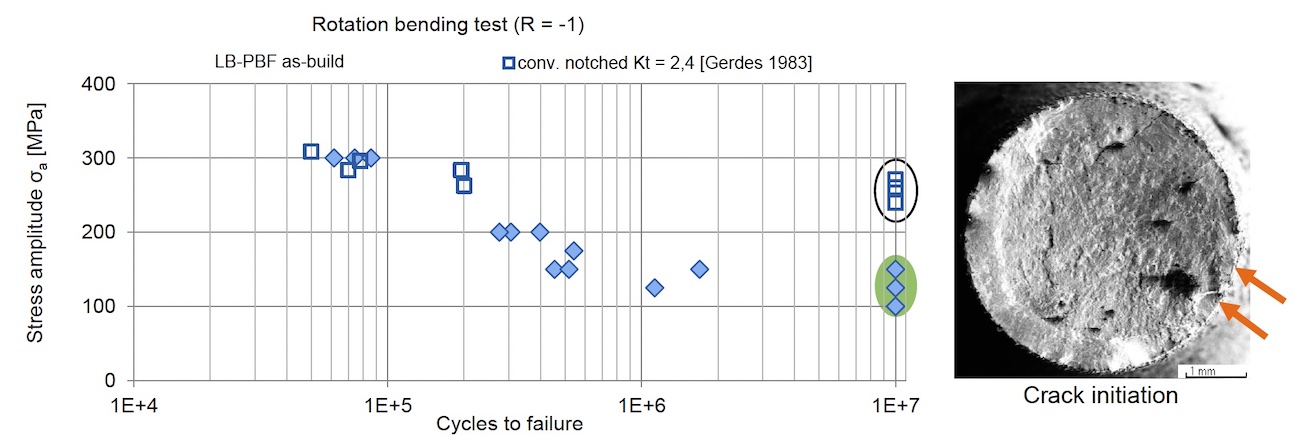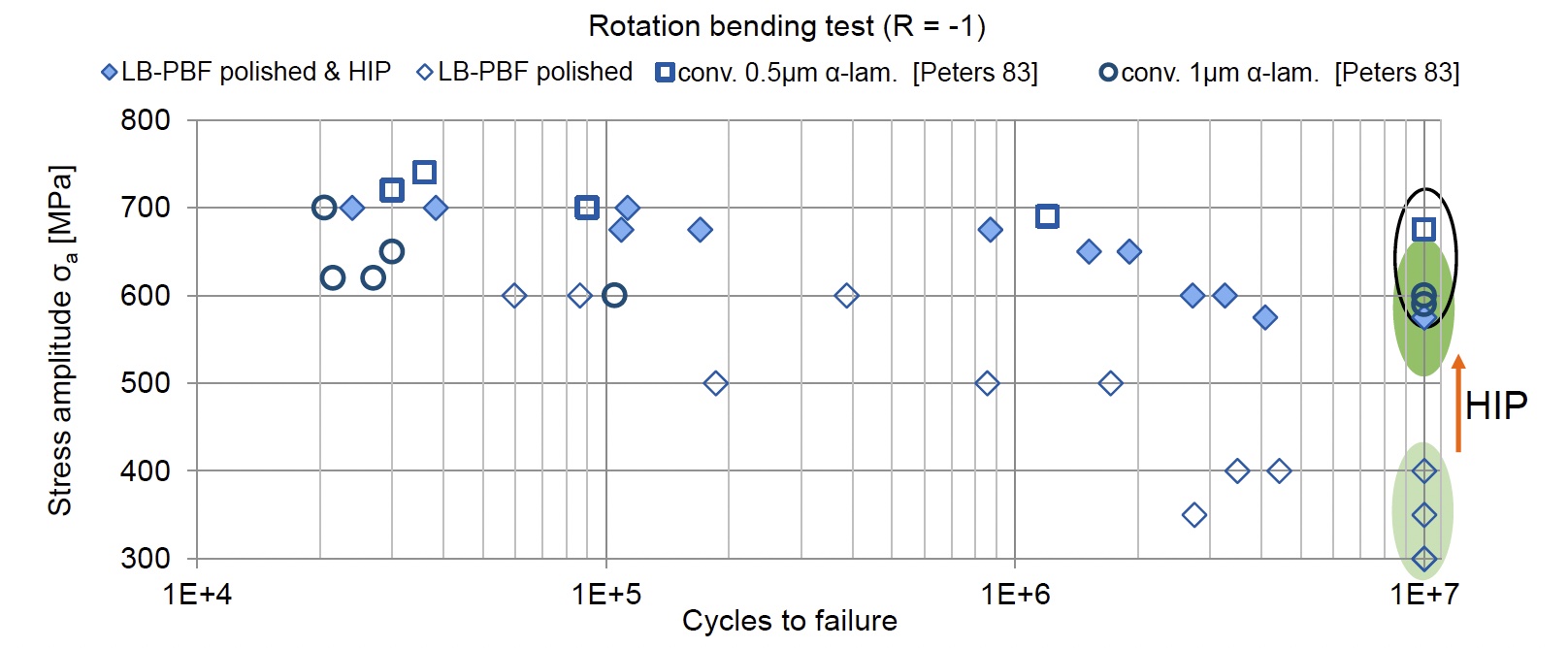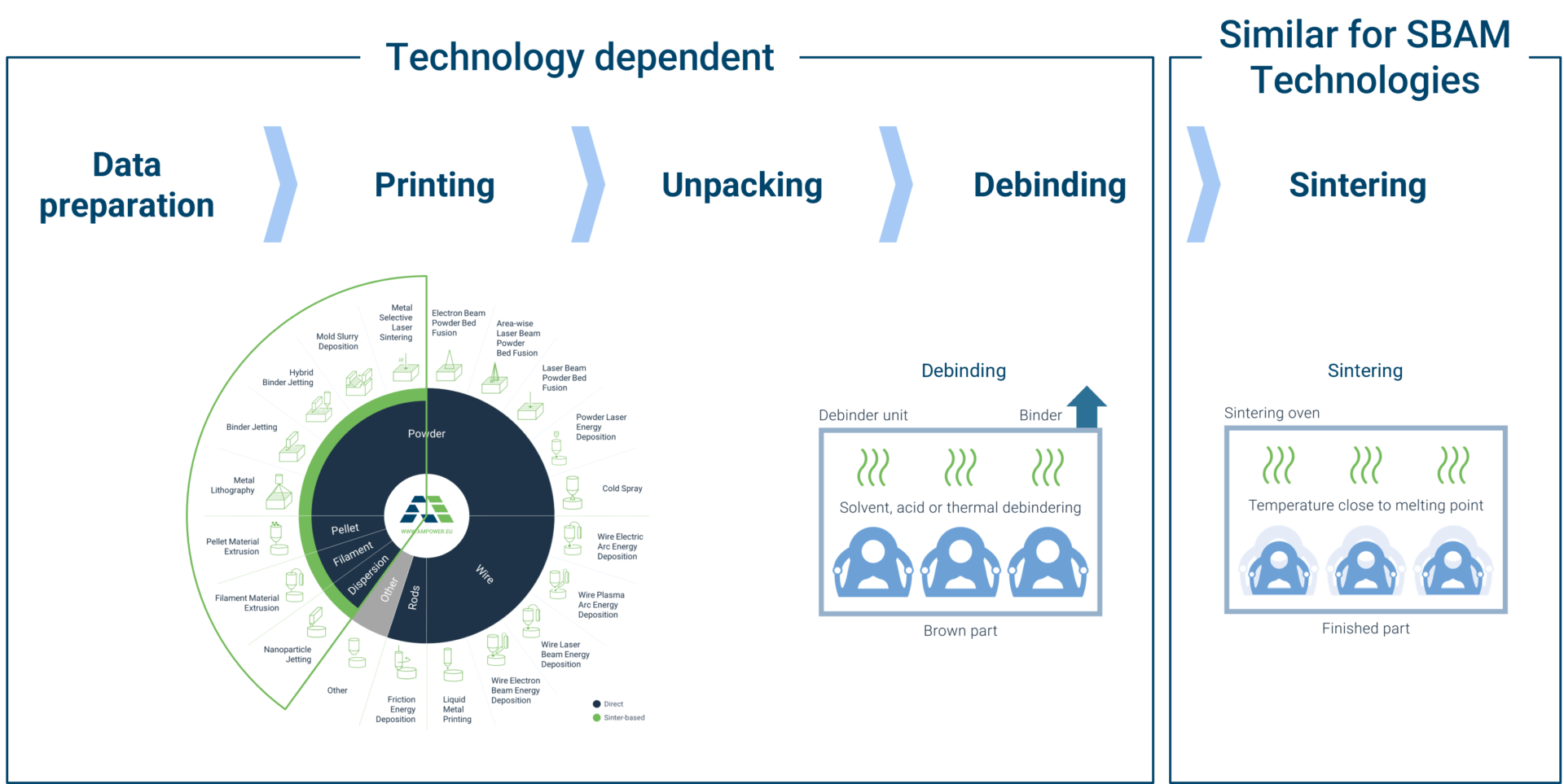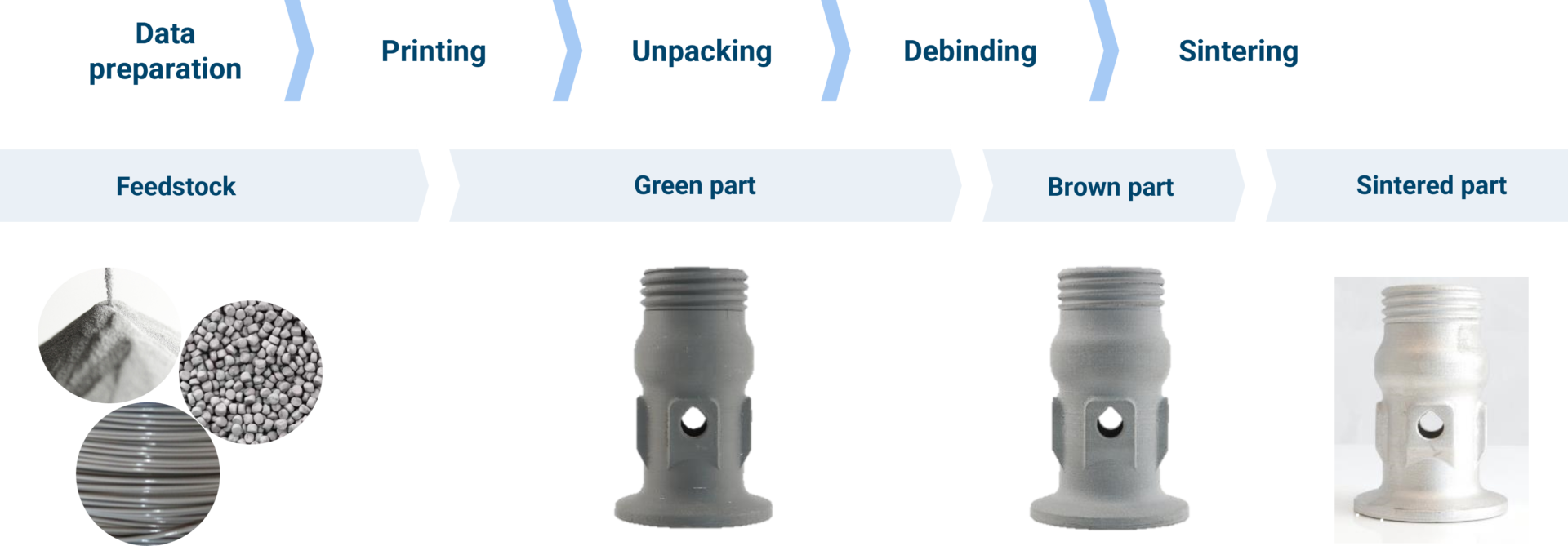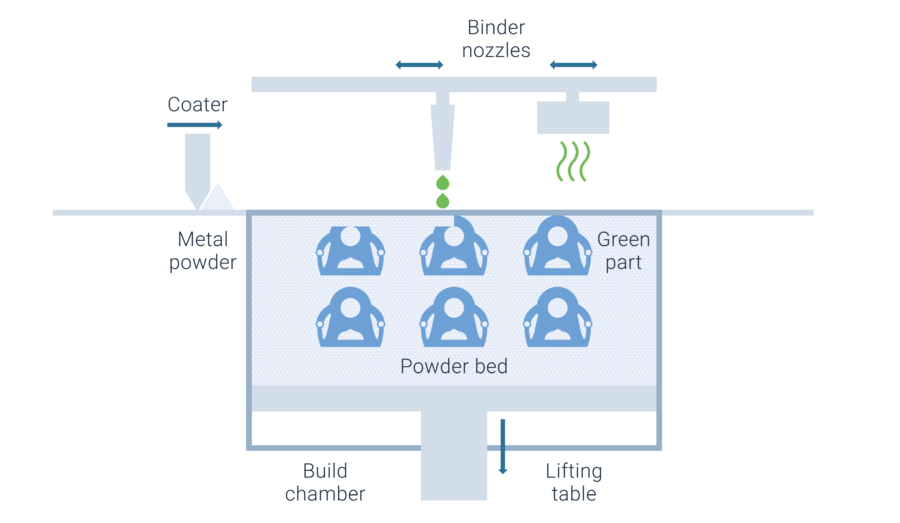Mechanical properties of selected materials
Mechanical properties of selected materials
Tensile, elongation and fatigue properties
In this section you will find overview tables of static mechanical properties including Ultimate Tensile Strength (UTS), Yield Strength (YS) and Elongation (epsilon) for the most common materials that are used for LPBF today. All values are based on material data sheets from selected machine OEMs and material suppliers. Average values are provided based on tensile samples that were printed in horizontal and vertical orientation. The values are provided in differnt material conditions. Without heat treatment in as build state as well as after typical heat treatments for the selected material. A more detailed breakdown including the spread from different suppliers can be downloaded as pdf on the course page.
At the end of this section, general information about fatigue properties LPBF material is provided using the example of Ti-6Al-4V.
AlSi10Mg
Reference: Die casted, DIN EN 1706, min. values
Stress relieved = Heat treated at 270°C and air cooled
T6 = Solution annealing at 530 °C, water quench and aging at 165 °C
Ti-6Al-4V (Grade5)
Reference = Wrought, AMS 4920, annealed
Stress relieved = Heat treated at 800 °C in vacuum or Argon
HIP = Hot Isostatic Pressing at 920 °C and 1000 bar
Ti-6Al-4V (Grade 23)
Reference = Wrought, ASTM F136-13, min. values
Stress relieved = Heat treated at 800 °C in vacuum or Argon
HIP = Hot Isostatic Pressing at 920 °C and 1000 bar
IN718 (Nickel-base alloy 2.4668)
Reference = Wrought, solution annealed, ASTM B637-18
Solution annelaed & aged = Solution annealed at 954 °C, quenched, aged at 718 °C
Solution annealed & double aged = Modified homogenization, solution annealed, double aged (according to ASTM F3055)
IN625 (Nickel-base alloy 2.4856)
Reference = Annealed at 1065 °C, ASTM B446
Stress Relieved = Stress relief at 870 °C, air cooled
Solution Annealed = Annealed at 1048 °C, furnace cooled
Hastelloy X
Reference = Sheet material, ASTM B435
Annealed & quenched = Annealing at 1177 °C, water quenching
Solution annealed = Annealing at 1177 °C, air cooled
1.2709 (M300)
Reference = Plate material, solution treated, AMS 6521, min. values
Solution annealed = Solution treated at 940°C, air cooled, aged at 490°C
Aging = Aged at 500 °C
Stainless Steel 17.4PH
Reference = Hot rolled plates, H925, ASTM A693, min. values
H900 = Solution treated, quenched, aged at 900 °F
Stainless Steel 316L
Reference = Plate material, annealed, ASTM A240
Stress relieved = Stress relief at 550°
Quenched = Solution treatment at 1095 °C, water quenching
Fatigue properties
Fatigue performance of L-PBF parts are strongly influenced by process inherent material and part properties. Early fatigue failure occurs in L-BPF parts due to the presence pores and a high surface roughness in as build conditions when compared to forged and machined material. To address these issues, post-processing techniques, such as surface polishing and hot isostatic pressing (HIP) can be applied.
In this section we will compare fatigue properties of printed Ti-6Al-4V to forged material in different conditions. In general, similiar influences of the part properties on fatigue results can be observed for all L-PBF materials.
As build surface condition
The chart compares fatigue performance of printed Ti-6Al-4V in as build surface condition to conventional samples with engineering notches. The resulting fatigue limit in as build specimen at 138 MPa is significantly lower than the notched conventional samples. The high surface roughness of the LPBF specimen results in multiple surface crack initiation and consequently early failure. Similar results can be obtained for Electron Beam Powder Bed Fusion (E-PBF), which has similar to worse surface properties in as build state.
HIPped and polished condition
The chart above shows the influence of polishing and HIPing on the fatigue performance of printed Ti-6Al-4V. The 3 data points at the bottom right show that through polishing fatigue performance can be increased to ~300 – 400 MPa at 10^7 cycles. After additional HIP, a fatigue limit close to 600 MPa, which is comparable to wrought material can be achieved.
Crack initiation due to stress concentration at process inherent micro porosity results in high scatter and reduced fatigue properties. Pores at or close to the surface lead to early failure while specimen with internal pores exhibit much longer lifetime to failure. Closing the pores by hot isostatic pressing reduces the scatter and increases the overall fatigue performance to levels of wrought and forged material.

